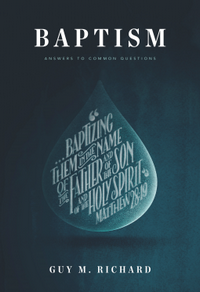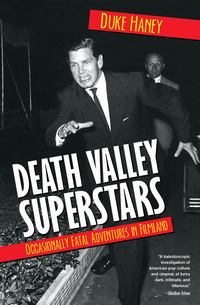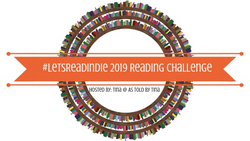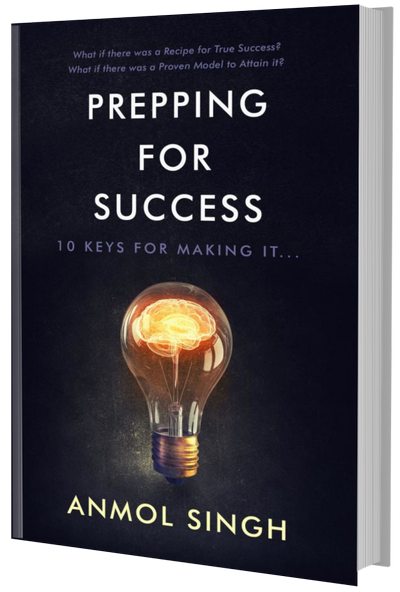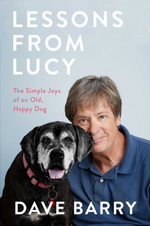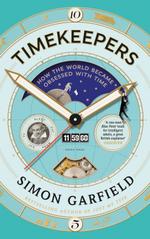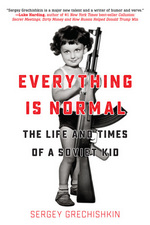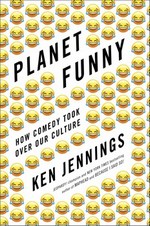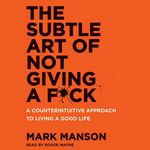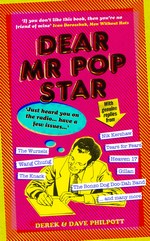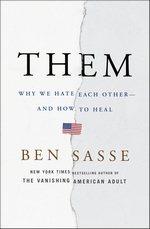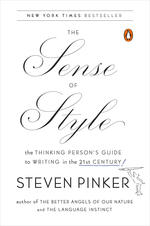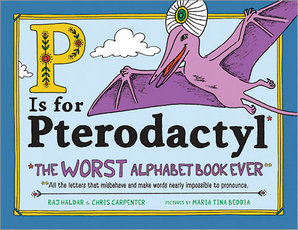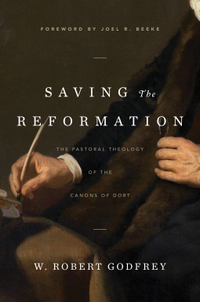 Saving the Reformation: The Pastoral Theology of the Canons of Dort
Saving the Reformation: The Pastoral Theology of the Canons of Dort
by W. Robert Godfrey
eARC, 265 pg.
Reformation Trust Publishing, 2019
Read: February 3 – 10, 2019

I’m halfway inclined to just copy and paste the Table of Contents here and say, “If you want to know about any of this, here’s where you start.” Slap a nice little graphic with some stars on it, and we’re done. But I’m not that lazy. This is a historically-based study of the Synod of Dort’s major product — the Canons of Dort (although it does look at some other concerns), the defense of the Reformed doctrines in answer to the challenges of Jacob Arminius and the Remonstrants that took up and furthered his cause following his death. The Canons gave us the so-called “5 Points of Calvinism” and are often misunderstood because of that and as mischaracterized as those points themselves. If this book only helps people stop doing that, it’d be well worth the effort (it won’t, but it’s pretty to think so) — but it’s so much more.
There are four parts to this book — any one of which can be read independently from the others. I’m not sure why you would do that, but they’re self-contained enough that you don’t have to.
Part I focuses on the historical and theological context for the calling of the Synod, those who attended and the topics it would address. Godfrey is a Church Historian and former History professor, this is his bread and butter, and you can tell that from these chapters. You also get the impression that he could’ve written a book about the same length as this one just on the historical matters without breaking a sweat. This isn’t the best part of the book, but it gets things off to a great start.
Part II is a “Pastoral” translation of the Canons prepared by Godfrey for this book. I’m not familiar enough with other translations to really have much to say about this. I’ve read others, but I don’t have them committed to memory. Besides, I don’t know Latin well enough to evaluate the translation. But I can say that this was a clear translation, it didn’t read like something written in Latin for experts, but something written to help me and other Christians to wade through some weighty topics. As the problems caused by the Remonstrants were in the churches more than in the academy, the language matched that.
The heart of the book is in Part III, An Exposition of the Canons of Dort. Godfrey beings with some observations about the Canons as a whole — how they’re structured before he dives in to the Canons themselves. In addition to the errors of the Remonstrants, the Canons address other issues related to the doctrines involved, providing a resource for believers for generations not just an answer to their contemporary problems. The pastoral focus of the Canons — and Godfrey — is evident throughout the Exposition, he’s frequently talking about comfort, encouragement, and assurance. It’s not just an explanation and defense of the Reformation and Protestant teaching, it’s an aid and comfort to believers.
It may come as a surprise to see what Godfrey points out as a result of compromise, and the reasoning behind those things that needed no compromise. The behind-the-scenes portions of the book are as interesting as the exposition (giving an indication to those of us who didn’t sit under Godfrey’s Church History lectures that we really missed out on something). Godfrey also points out how the Canons weren’t as successful in some ways as they wanted to be — not as a failure, just that some of their goals were out of reach of the assembly.
Some of this section gets repetitive — because each Head of Doctrine is complete in itself, capable of standing alone — so similar points are covered repeatedly. Godfrey’s exposition both points that out and is written to keep the repetition from being dull, but instead an indication of the importance of the various points. This section is so helpful that I really can’t do justice — my copy is full of highlighted lines/paragraphs. I will be returning to it often, I know that. Concise, clear, insightful — everything you want in this kind of study.
The remainder of the book is Appendices. There’s an outline of the Canons, an explanation for the pattern of each head of doctrine (very similar to the same idea in the Exposition) and a handy guide to the relation of the positive articles to the rejection of errors. The last appendix is a new translation of the Synod’s provisional position on the Sabbath, giving some insight into the relation of the Synod’s stance to that of British Puritanism. The largest, and probably most helpful (and maybe controversial) is an extended look at Arminius and his overall project. Godfrey takes a position that argues against some recent scholarship (as I understand) and insists that he wasn’t a moderate Reformed churchman, but someone seeking to overturn segments of the church’s teaching and introduce serious Pelagian error.
In this anniversary year, I know this will not be the only book about the Synod released (I have another pre-ordered, and am sure I’ll pick up others) — but I can’t imagine that it won’t be one of the better. It is well-researched, careful, encouraging and pastoral — this is not dry and dusty history, nor dry and dusty doctrine. This book, like the Synod it focuses on, seeks to defend, protect and further the cause of the Protestant Reformation, the Gospel itself. As such, it succeeds and you’d do well to study it.
Disclaimer: I received this eARC from Reformation Trust Publishing via NetGalley in exchange for this post — thanks to both for this.


